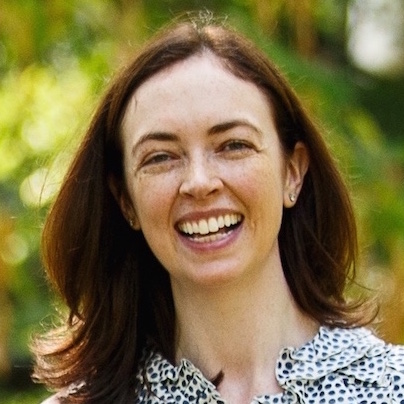Caroline came to us for insurance as the primary earner in her family. We learned about some medical red flags that threatened to make coverage out of budget for her. Read on to learn how we worked with multiple carriers to get her classified for a better tier and ended up saving her 50%. It took more time and effort from our team, not to mention cut our earnings in half, but we are committed to doing right by the client 100% of the time.
The client’s goals
Caroline* came to AboveBoard looking for help finding life insurance shortly after the birth of her daughter. Caroline, 40, is the Executive Director of a highly successful experiential marketing and event planning firm, with a very solidly 6-figure income and solid net worth. Caroline’s husband also generates an income working as a musician, but Caroline’s salary accounts for ~90% of household income.
Caroline wanted to ensure that, should she be gone unexpectedly, her infant daughter could attend any college debt-free, and her husband could pay off their mortgage. She also wanted to make sure they’d be able to afford “multiple trips to Disney to help them overcome their grief” (her words!) or the ability to do things to help soften the blow of Caroline’s loss, like having the budget to fly family and friends in for holidays and birthdays.
The initial application
We designed a $5 million 25 year term ladder that perfectly matched Caroline’s needs and goals.
Caroline has a thyroid condition, but it’s well-controlled by medication. Her otherwise good health history and healthy lifestyle made her a good candidate for the least expensive pricing tier available in the market (sometimes called “Preferred Best” pricing).
The problem
"Insurance Company A" started their underwriting (when an insurance company examines the client’s profile and determines if they’d be willing to insure the person and, if so, at what pricing class). Something unexpected came back: Caroline had moles removed 7 years ago that were “dysplastic nevi,” non-cancerous moles that, despite being benign, are associated with higher risk of developing melanoma in the future.
As a result, Insurance Company A made their offer of coverage at Standard pricing, 3 notches more expensive what we’d been hoping for (Preferred Best pricing).
It was a big difference in pricing: $420/month for the $5 million 25 year ladder, which was nearly 2.5x what Caroline was aiming to pay.
When we reached out to Caroline to share this information and discuss how we could help her, she immediately knew what we were talking about. “Oh, yes, that was years ago. My dermatologist told me they were benign, and I never even thought about it again—it just didn’t seem like a big deal.” In the seven years since the removal of moles, Caroline and her husband had navigated a taxing fertility journey. Understandably, it didn’t occur to her to mention such a simple procedure when asked about medical history.
Objectively, Caroline’s history of dysplastic nevi or atypical moles represented an increased risk of later melanoma, but it’s not a given. For this reason, it seemed possible that different insurance companies might have different opinions and assess the risk differently. We especially thought this since Caroline was otherwise healthy and generally diligent about taking care of herself.
The solution
We immediately activated our “secondary competitive shopping” process and shared Caroline’s case with about 20 more carriers.
Most carriers indicated pricing around the same tier (Standard) as Insurance Company A, and some were more expensive (“Table-Rated”, which is basically a surcharge to Standard). The good news was that a few companies offered Standard pricing and seemed willing to consider something even better.
Insurance Company B came back with the best proposition: get a clear dermatology check-up, and Caroline would likely get their best pricing.
If Caroline could get Company B’s Best-tier pricing, it would be only a bit more expensive than what we had applied for at Insurance Company A, and much better than any other options.
But there was also a risk: if Caroline went in for the derm exam, and they discovered melanoma, she’d be uninsurable—at least for a while.
Caroline would go home from that appointment with no life insurance, no chance of getting life insurance anytime soon, and much higher pricing years later when some carriers might consider insuring her.
That was a huge, unacceptable level of risk—having 90% of their household income uninsured could be devastating for her daughter and husband. We also didn’t want Caroline locked into paying over $5,000/year for a $5 million 25 year ladder when it seemed like she was fundamentally quite healthy.
We suggested what we hoped would be a temporary solution: formally accept Insurance Company A’s offer of Standard, but do two things:
- Pare down the amount of coverage to the essentials. Leave out the “luxe” nice-to-haves
- Pay monthly, not annually (and give up a ~5% discount by doing so), with the hope that we could soon switch to a different policy with Insurance Company B, without much advance payment
This solution worked well in both possible what-if scenarios:
- Bad outcome: Caroline’s dermatology exam finds something bad and getting an offer better than Insurance Company A’s becomes impossible. Still, Caroline would be appropriately insured and her family protected. After 12 months, she could switch to annual pay to recover the ~5% discount.
- Good outcome: Caroline’s dermatology exam is all clear. We apply to Insurance Company B, they come through with their indicated pricing, and Caroline drops Insurance Company A’s coverage once the new coverage is in place.
Long story short: it all worked out!
We got the best outcome: Caroline’s dermatology exam came back completely clear. We applied to Insurance Company B, and they came through on Preferred Best pricing for Caroline.
Insurance Company B’s pricing and products are different from Insurance Company A’s, so to achieve her budget and coverage goals, we designed a $4.5 million 30 year ladder plan: $3.5 million 20 year + $1 million 30 year.
Caroline’s premiums ended up being $210/month for coverage she was happy to have with Insurance Company B, representing a 50% discount from the $420/month that Insurance Company A had offered!
Why we’re proud of this client story
It’s important to share that by cutting Caroline’s premiums in half, we also cut our own revenue in half. It also took a lot more time and effort than if we had taken an approach that’s all too common—not advocating for your client.
We could have hidden behind Insurance Company A’s response and said, “sorry, you didn’t mention your derm records.” I experienced a similar treatment when I was shopping for life insurance myself years ago. It sucks. I knew that any company of mine had to be different.
I’m proud to say we succeeded—AboveBoard served as Caroline’s smart and hard-working client-first advocate. She got the coverage she needs and the best possible pricing.
Since then, Caroline has referred us to her family members and colleagues. Today, we’re helping her and her company find a way to offer disability benefits to all employees.
We believe in doing the right thing—it’s the best long-term strategy for our clients and for AboveBoard.
*Note: All names, professions, and other personally identifying details have been changed to protect our clients’ identities.
AboveBoard Insurance Services LLC is a licensed insurance broker and a wholly owned subsidiary of AboveBoard Financial Inc. The quotes referenced in this article and all our “Client Stories” are for illustrative and educational purposes. They are reasonably accurate and directionally correct, but we’ve rounded the numbers to make for easier reading (for example, a number like $5,048.37 becomes ~$5,000, 42.6% becomes ~40%, etc.). As noted above, we have also changed any personal details that could be used to identify the actual clients, including names, professions, exact family structure, etc. So if you read this and thought, “I think I know them,”...you definitely don’t—our adjusted identities just happen to sound like someone else.





